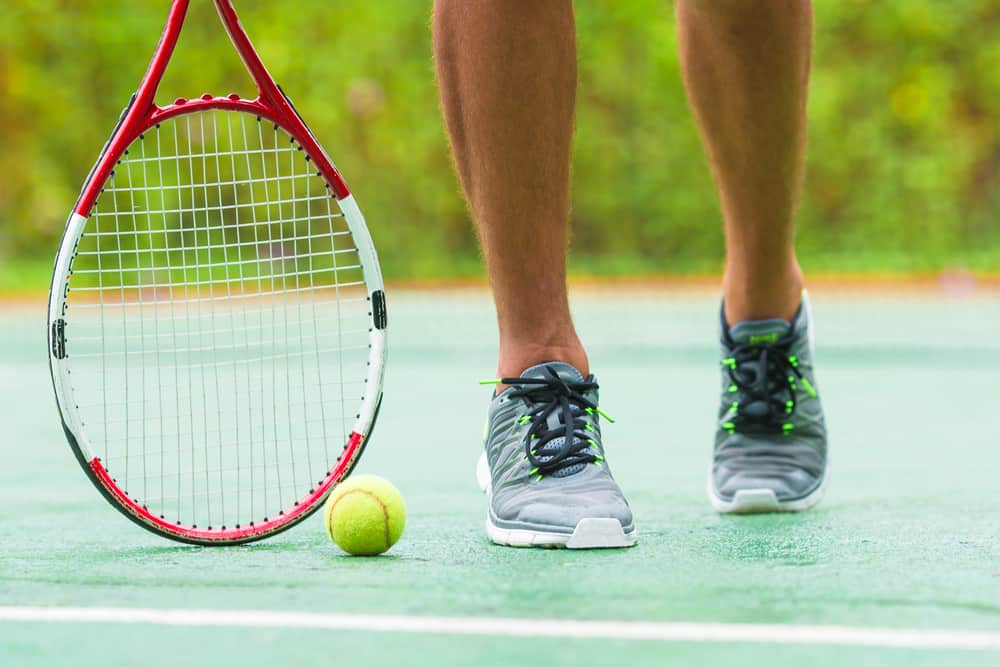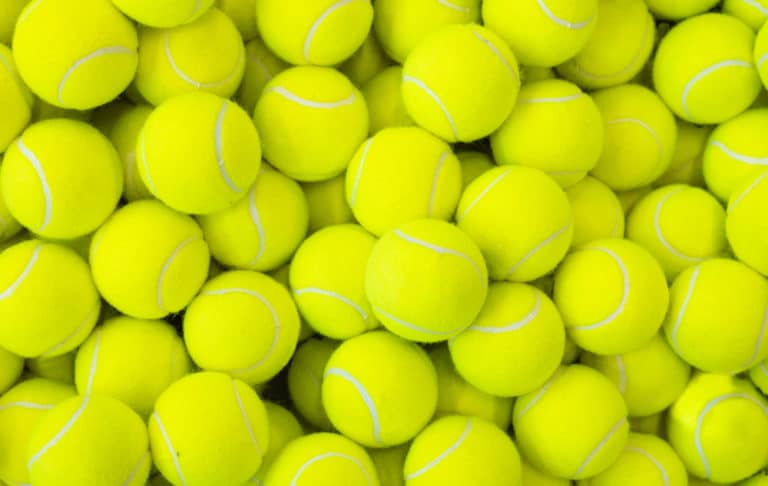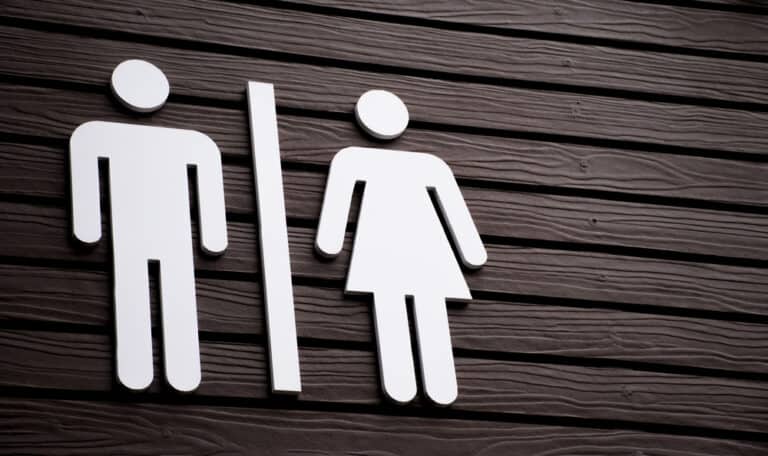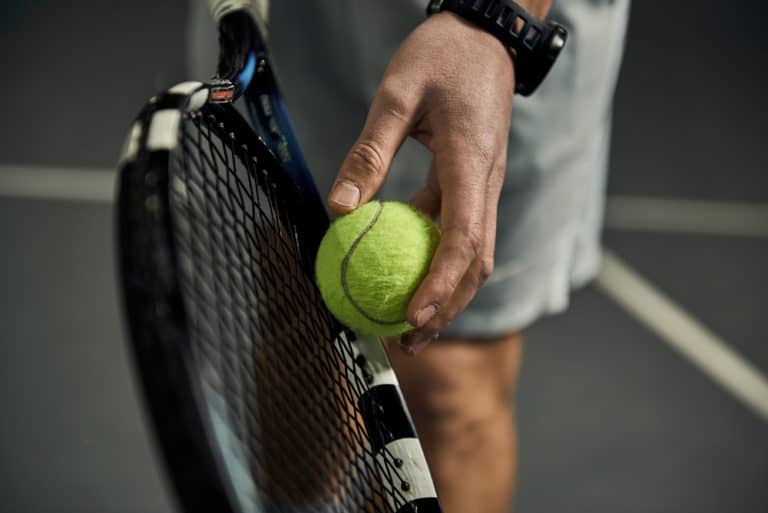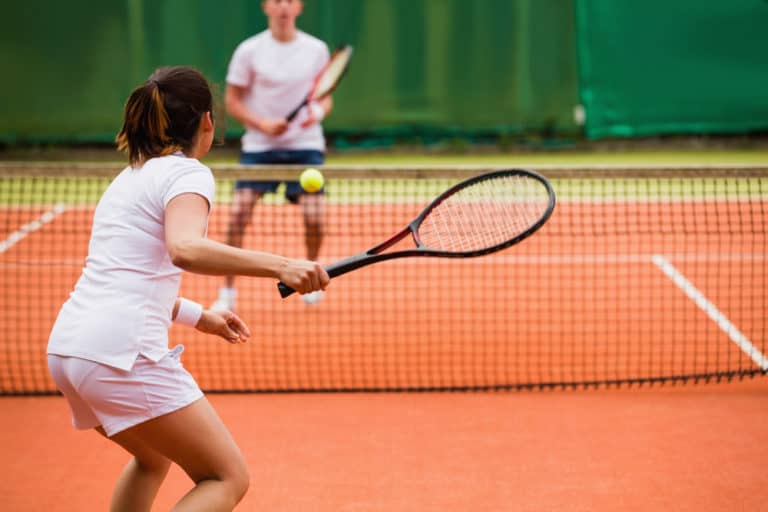How Do You Know If Your Tennis Racket Is Too Heavy?
Your performance on the tennis court is greatly affected by the weight of your tennis racket. There is a close correlation between the weight of a racket and aspects like speed, impact, and maneuverability. When using a racket that is too heavy, these aspects are negatively impacted – but how do you know if your tennis racket is too heavy?
To determine whether a tennis racket is too heavy for them, players should use the racket in a few matches while monitoring their performance. For many players, this is simply a matter of adjusting their techniques to the heavier racket. In other cases, players will need to choose a lighter racket.
If you’re worried your tennis racket might be too heavy for you, we’ll break down everything you need to know. Once we’ve looked at how players can tell if their racket is too heavy for them, we’ll look at adjusting to heavier tennis rackets, why many professional players use heavy rackets, and choosing the best racket for your skill level.
How To Tell If Your Tennis Racket Is Too Heavy
The weight of your tennis racket impacts your performance on the court. Essentially, the weight of a racket is closely linked to aspects like speed, impact, and maneuverability. Of course, this is one reason why tennis players are advised to stick to a racket weight class and style when practicing and competing.
Even slight changes in the weight of a racket can negatively impact a tennis player’s game. Using a racket heavier or lighter than your regular one will impact the aforementioned factors, such as speed and maneuverability. Sticking to a particular racket style and weight class will greatly enhance your overall performance.
However, many tennis players choose an incorrect weight class. Sticking to a tennis racket that is too light or heavy will hinder your performance in the long run. Of course, one aspect of avoiding this is ensuring that your tennis racket is not too heavy for you – but how can you do that?
Ultimately, the best way for tennis players to determine whether their racket is too heavy for them is to play a few rounds with it. Players should complete between 3 and 5 matches with their racket when testing whether it’s too heavy for them.
If you usually play less or more than this, you can adjust how many matches you play with the racket. Once you’ve completed these matches, you’ll be able to determine whether your racket is too heavy for you.
If you completed these matches and didn’t feel very tired, your tennis racket is likely a suitable weight for your needs. How does your arm feel after playing three to five matches with the heavy racket? If your arm does not feel tired, it means you can handle the weight of the racket. However, if a racket is too heavy for you, there will be specific signs to look out for.
Every tennis player needs to ensure that they can comfortably and easily swing their racket. When using a racket with the appropriate weight class for your needs, you’ll be able to make comfortable swings. However, when using a racket that is too heavy, it will be harder to swing your racket.
When swinging with a racket that is too heavy, players will not be able to utilize the full rotation of their shoulders. Instead, players with excessively heavy rackets will overutilize their arms instead of putting the weight of their legs and body into the game.
In turn, a racket that weighs too much for you will affect your timing during matches. Ultimately, a racket that is too heavy for a player will slow their game down. If you find yourself missing shots with a certain racket, it’s likely that the racket you’ve chosen weighs too much.
If you found that your arm was tired after playing a few matches with a certain racket, the racket is too heavy for you. In addition to impacting your performance on the court, a racket that is too heavy for your needs has the potential of injuring your wrist and shoulder.
As we mentioned earlier, a racket with a suitable weight class won’t leave your arm feeling especially tired after a few matches. When deciding whether a racket is too heavy for them, players need to consider the muscle tone in their wrist and shoulder. For those lacking muscle tone in these areas, a lighter racket would be advised.
If you noticed any of these signs while using a heavier racket, there’s a good chance you may need a lighter racket. However, before you splurge on a new racket, there’s another aspect for you to consider. Of course, that is your technique.
In many cases, new rackets may feel too heavy for players – but that doesn’t always mean this is the case. Before switching to a lighter racket, you should try adjusting your technique and playing a few more matches. You might just find your racket isn’t too heavy after all!
Adjusting Your Techniques To Heavier Tennis Rackets
Above, we looked at the effects of using a tennis racket that is too heavy. For players who have noticed these signs after using a racket for more than a month, the racket is likely too heavy for them. Here, a lighter racket would be recommended.
However, if you’ve recently invested in a heavier tennis racket than those you’re used to using, don’t give up hope yet! In many instances, it’s just a matter of adjusting your techniques to the new racket. When you don’t adequately adjust to the heavier racket, you will also notice the signs we discussed earlier.
Before we look at adjusting to a heavier racket, let’s look at why this adjustment period is needed. With a lighter tennis racket, swings will naturally be easier. However, when a tennis ball hits a lighter racket’s strings, the player needs a tighter hold on their racket to oppose the ball’s force.
With a heavier racket, however, these dynamics shift. With a heavier racket, a player supplies much less power to hold their racket when the ball makes contact. Due to this, using a heavy racket without properly adjusting to it will result in poor timing and swings. It can even leave you feeling tired after a few matches. However, adjusting your technique to the new racket may alleviate these symptoms.
When playing with a heavier racket, many tennis players start playing the same way they would with their previous racket. To adjust to a heavier racket, players are advised to start hitting balls going at slower speeds than those they are used to hitting. Doing this allows players to focus on their timing and technique while swinging a heavier racket.
By hitting slower balls at first, players allow their minds and bodies to adjust to the change in racket weight. You should also hit fewer balls at first. The key is not to overdo it! Start by practicing by hitting fewer and slower balls, then slowly increase the number of balls you hit and their speeds.
If the racket isn’t too heavy for you, these increases will feel natural, and you won’t feel tired after playing for a few hours. However, if you find the same issues persisting despite this adjustment period, then your racket is too heavy for you. In the following sections, we’ll look at why players use heavy rackets and how to pick the right racket for you!
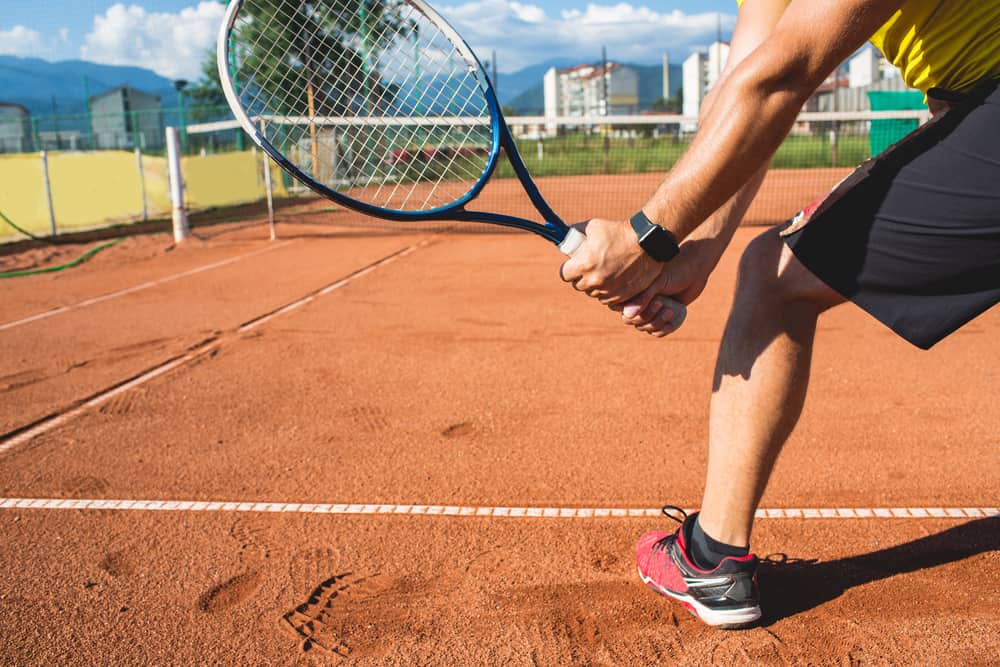
Why Do Tennis Players Use Heavy Rackets?
Many tennis players are unsure about the best racket for their needs. There is a common misconception that all professional tennis players use heavier rackets. Due to this, many tennis players think they, too, need to use a heavier racket. However, that’s not to say there aren’t advantages to using a heavy tennis racket!
Not only are heavier tennis rackets more powerful than lighter counterparts, but they offer more stability. In fact, many players find heavier rackets more comfortable to hold for extended periods. One reason for this is that heavier rackets transmit less shock, allowing them to better handle impacts and reducing the shock to the player’s arm.
Of course, we touched on this in the previous section when we discussed hitting a ball with a heavier racket. With a heavier racket, less force is required from players to oppose the ball’s force at the contact point. While personal preference plays a role here, many players prefer using less force. After all, this can help prevent tennis-related wrist and arm injuries.
The above-discussed reasons should give you a better idea of why many professional players choose to use heavier rackets. Generally, a heavy tennis racket is classified as a racket that weighs more than 11 ounces (310 grams). Pete Sampras was known for using rackets of around 13.5 ounces (384 grams). However, not all professionals use heavy rackets!
For instance, world-renowned players like Venus and Serena Williams have been known to use lighter rackets during their professional tennis careers. A light tennis racket is typically classified as one that weighs less than 10 ounces (285 grams). Of course, there are advantages to this, too, such as being able to react faster.
From these ‘light’ and ‘heavy’ benchmarks, it’s clear that there’s a narrow margin between a tennis racket that is considered light or heavy. Despite this narrow margin, even the slightest change in weight can throw off a player’s game – which is why players are often advised to stick to a certain racket weight class.
However, when the racket you’re using is too light or heavy for you, you’ll notice many errors in your performance. As we discussed earlier, many players can adjust to using a heavier racket. However, if you’ve been hitting many errors despite adjusting to a new racket, the racket is likely the wrong weight for you – but how do you pick the right racket?
Choosing The Right Tennis Racket
When choosing the right tennis racket, there are two main aspects to consider: weight and balance. Of course, weight refers to the actual weight of the racket, which we briefly discussed above. However, the balance of a racket is also important!
Tennis Racket Weight
When choosing the right racket weight, you need to consider your expertise. There are three main racket weight classes: light, medium, and heavy. Let’s look at which players each weight class caters to.
Light Tennis Rackets
Light tennis rackets are typically classified as those weighing less than 10 ounces. These rackets are perfectly suited to beginners who have been playing tennis for less than a year. These rackets provide players with a great deal of maneuverability. A lightweight racket will allow players to focus on improving their strokes and refining their techniques.
Medium Tennis Rackets
Medium tennis rackets are classified as those weighing between 10 and 11 ounces. While still offering decent maneuverability, these rackets provide a nice balance between power and control. These rackets are better suited to intermediate and advanced tennis players.
Heavy Tennis Rackets
Finally, heavy tennis rackets are classified as those weighing upwards of 11 ounces. Of course, we discussed the benefits of these rackets earlier. Generally, heavy tennis rackets are best suited to advanced and stronger tennis players – which is why professional players commonly use heavier rackets.
Tennis Racket Balance
In addition to the weight of a racket, players also need to consider a racket’s balance. Choosing the correct balance will improve the effectiveness of your shots. There are three main types of racket balances for players to consider: head-light, head-heavy, and balanced.
Head Light Tennis Rackets
With head-light rackets, much of the racket’s weight will be centered in the grip. This improves the racket’s maneuverability. However, head-light rackets do not give players much power, which is why they’re better suited to intermediate and advanced players.
Head Heavy Tennis Rackets
With head-heavy tennis rackets, much of the weight is centered in the racket’s head. While this allows players to generate more power, these rackets do not offer much maneuverability. For beginner players, who play matches at slower paces, head-heavy rackets are ideal.
Balanced Tennis Rackets
For most players, balanced tennis rackets are ideal. With these rackets, the weight is evenly distributed between the head and grip. Of course, this allows for a great balance between power and maneuverability, which is why they’re suited to most tennis players.
Conclusion
When determining whether a tennis racket is too heavy for a player, they should play with the racket in a few matches and monitor their performance. For many players, a heavier racket simply requires players to adjust their technique. However, if a racket is too heavy for a player, they should carefully choose a new racket by considering weight and balance.
Sources
- https://www.feeltennis.net/hold-racket/
- https://www.curated.com/journal/375000/an-expert-guide-on-how-to-grip-a-tennis-racquet
- https://tennishead.net/tennis-racket-specifications-explained/
- https://tenniscompanion.org/tennis-racquet-weight-and-balance/
- https://tennisconnected.com/home/2020/01/23/are-lighter-tennis-rackets-better-than-heavier-ones/
- https://www.tennisgear.com.au/blogs/news/what-racquets-do-the-pros-really-use

